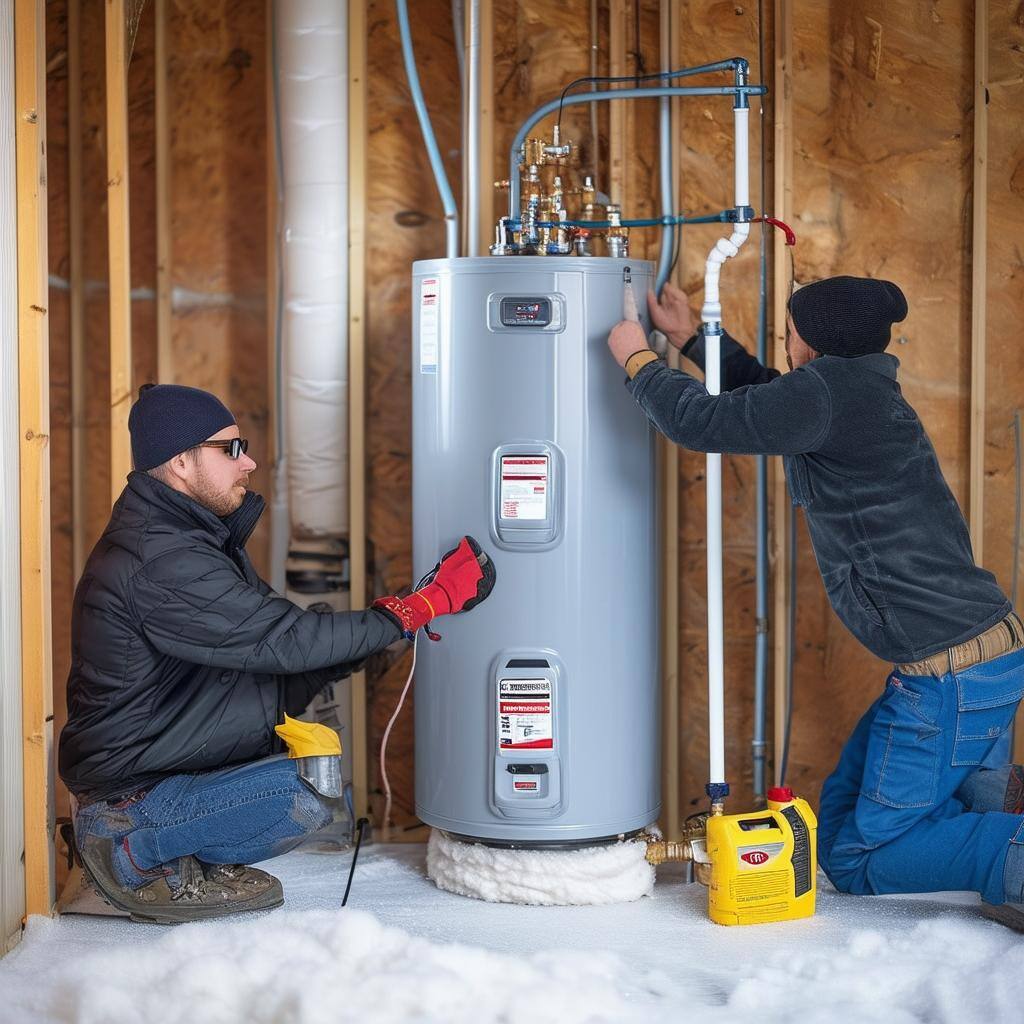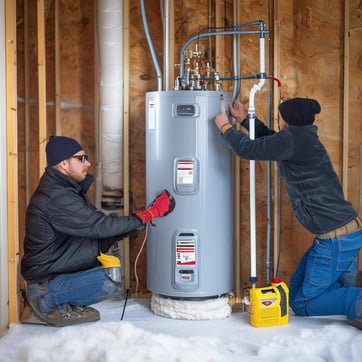
As winter approaches, ensuring that your water heater is ready to handle increased demand is essential for both comfort and efficiency. A properly winterized water heater not only prevents cold showers but also helps reduce energy consumption and prolong the life of your unit.
Addressing common hot water heater problems symptoms early and making small adjustments to improve water heater efficiency can make all the difference in how your system performs during the cold season. So that you can avoid water heater repair, here’s a guide on how to winterize your water heater to keep your home cozy and your water warm.
1. Insulate Your Water Heater and Pipes for Better Efficiency
One of the best ways to improve water heater efficiency during winter is to insulate both the water heater and surrounding pipes. This simple step reduces heat loss, allowing the water heater to use less energy to keep water warm, which ultimately saves you money on heating costs.
- Insulating the Water Heater: Consider investing in an insulating blanket specifically designed for water heaters. Wrapping this blanket around the tank reduces heat loss and improves efficiency, especially if you have a high efficiency gas water heater.
- Insulating the Pipes: Use foam insulation on the exposed pipes around your water heater. By insulating the pipes, you help prevent them from freezing and reduce heat loss, which allows your water heater to operate at its best.
2. Flush the Tank to Remove Sediment Buildup
A significant but often overlooked factor affecting water heater efficiency is sediment buildup. Over time, minerals in the water accumulate at the bottom of the tank, causing the water heater to work harder to heat the water and reducing its efficiency. Regularly flushing your water heater can prevent these problems, helping it run more smoothly and extending its life.
Flushing the Tank: To flush your water heater, turn off the unit, connect a hose to the drain valve, and let the water flow out until it runs clear. This process removes sediment and helps improve the efficiency of both traditional and high efficiency water heaters. For best results, consider flushing the tank at least once a year.
3. Adjust the Temperature for Energy Savings
Reducing the temperature setting on your water heater can make a big difference in terms of energy efficiency and cost savings. Many water heaters are set to 140°F by default, but setting the temperature to 120°F can improve efficiency and save on energy bills without compromising comfort.
Why Lower the Temperature? Lowering the temperature reduces the workload on the water heater, which is especially important in winter when it has to work harder. This minor adjustment can make your water heater more energy efficient and prolong the life of the unit.
 4. Test the Temperature and Pressure (T&P) Relief Valve for Safety
4. Test the Temperature and Pressure (T&P) Relief Valve for Safety
The temperature and pressure (T&P) relief valve is a critical safety feature on your water heater. This valve releases excess pressure from the tank if the water temperature or pressure gets too high, preventing potential damage. Testing this valve is an essential part of preparing your water heater for winter.
How to Test the T&P Valve: Place a bucket under the discharge pipe and lift the lever on the T&P valve. You should hear a slight rush of water, indicating the valve is functioning correctly. If no water is released or the valve leaks after testing, it may be time to replace it. Properly functioning safety features are especially important for high efficiency water heaters, as they operate under slightly different pressures and demands.
5. Consider Upgrading to a High-Efficiency Water Heater
If your water heater is old or requires frequent repairs, it might be time to consider installing a high efficiency water heater or even a high efficiency gas water heater. These units use less energy and are designed to provide a steady supply of hot water, making them an excellent option for homes that experience high hot water demand.
- Benefits of High-Efficiency Models: High-efficiency water heaters provide consistent hot water without the need to maintain a full tank of heated water, which can result in significant energy savings. When installing a water heater, especially a high-efficiency model, you’ll not only enjoy more reliable hot water but also lower energy costs throughout the winter.
- Professional Installation: To maximize the benefits of a high-efficiency unit, consider hiring a professional for your water heater installation. Proper installation ensures optimal performance, safety, and energy savings.
Schedule Professional Help for Your Winterization Needs
Whether you’re winterizing an older water heater or considering the benefits of an energy efficient water heater upgrade, preparing now can prevent unwanted cold showers and high utility bills this winter. By insulating your system, flushing the tank, adjusting the temperature, and testing the T&P valve, you’ll keep your water heater running efficiently.
For assistance with winterizing, upgrading, or installing a water heater, contact Crawford Mechanical Services. Our experienced technicians are ready to help ensure your water heater is ready for winter, so you can enjoy reliable hot water and increased energy savings all season long.



